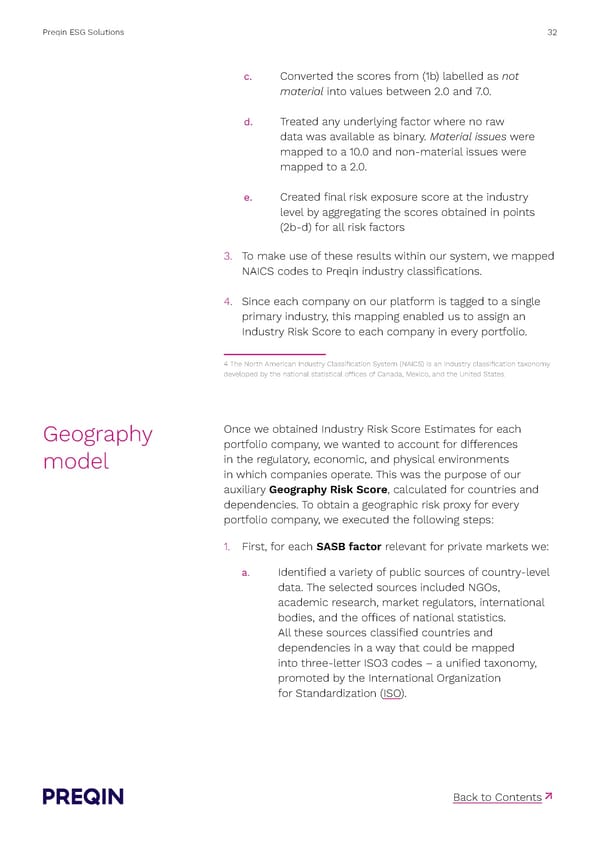Preqin ESG Solutions 32 c. Converted the scores from (1b) labelled as not material into values between 2.0 and 7.0. d. Treated any underlying factor where no raw data was available as binary. Material issues were mapped to a 10.0 and non-material issues were mapped to a 2.0. e. Created 昀椀nal risk exposure score at the industry level by aggregating the scores obtained in points (2b-d) for all risk factors 3. To make use of these results within our system, we mapped NAICS codes to Preqin industry classi昀椀cations. 4. Since each company on our platform is tagged to a single primary industry, this mapping enabled us to assign an Industry Risk Score to each company in every portfolio. 4 The North American Industry Classi昀椀cation System (NAICS) is an industry classi昀椀cation taxonomy developed by the national statistical o昀케ces of Canada, Mexico, and the United States. Geography Once we obtained Industry Risk Score Estimates for each portfolio company, we wanted to account for di昀昀erences model in the regulatory, economic, and physical environments in which companies operate. This was the purpose of our auxiliary Geography Risk Score, calculated for countries and dependencies. To obtain a geographic risk proxy for every portfolio company, we executed the following steps: 1. First, for each SASB factor relevant for private markets we: a. Identi昀椀ed a variety of public sources of country-level data. The selected sources included NGOs, academic research, market regulators, international bodies, and the o昀케ces of national statistics. All these sources classi昀椀ed countries and dependencies in a way that could be mapped into three-letter ISO3 codes – a uni昀椀ed taxonomy, promoted by the International Organization for Standardization (ISO). ↗ Back to Contents
 Preqin ESG Solutions Methodology Page 31 Page 33
Preqin ESG Solutions Methodology Page 31 Page 33